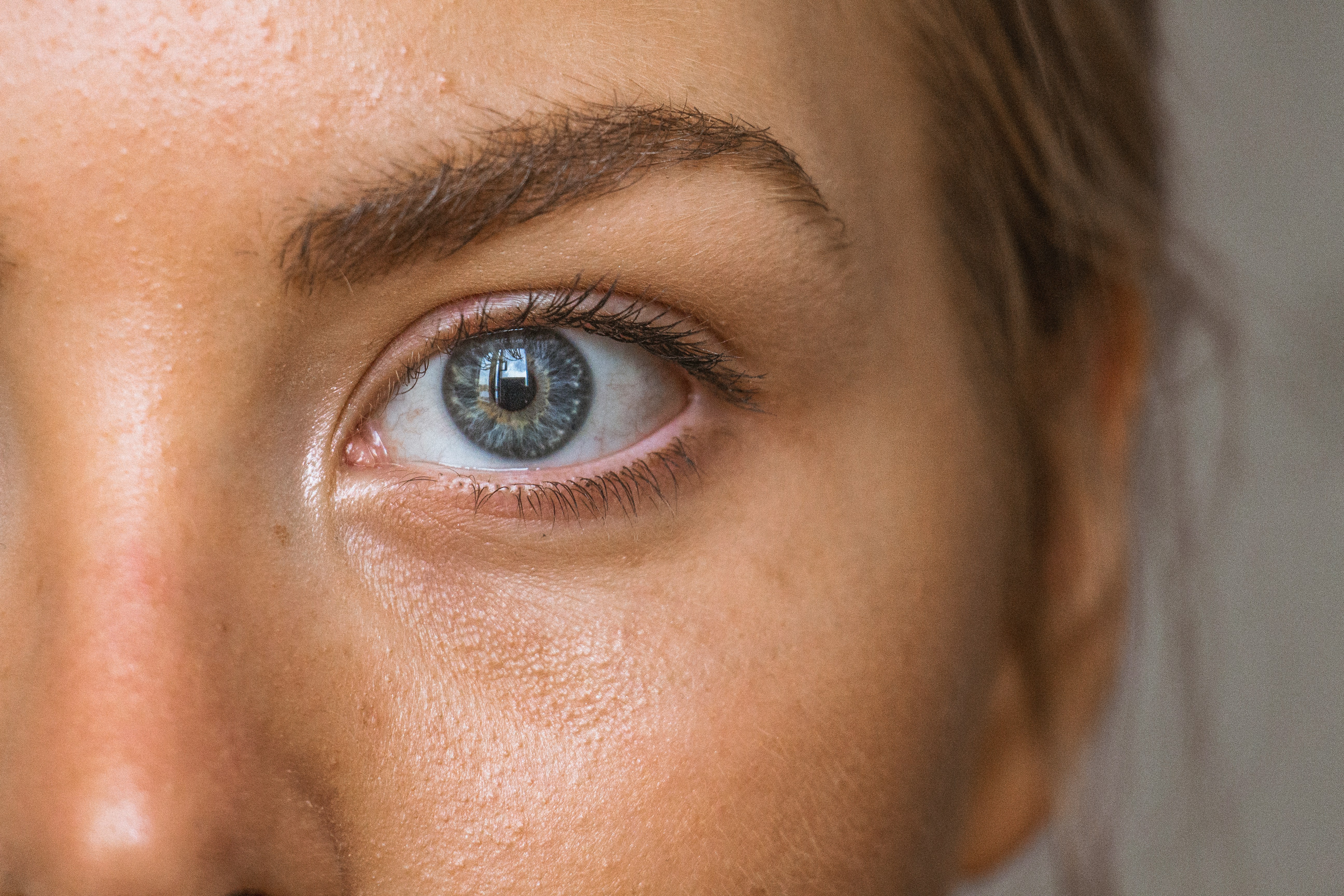
Published 2024-10-03
Keywords
- ptosis, droopy eyelid, third nerve palsy
How to Cite
Copyright (c) 2024 Nikhil Patil, Adnan Pirbhai

This work is licensed under a Creative Commons Attribution-NonCommercial-ShareAlike 4.0 International License.
Abstract
QuestionA 75-year-old male presents to the ophthalmology service with a drooping left upper eyelid. Upon further questioning, he states that he feels his visual acuity has deteriorated in the left eye, but only in the dark. On testing his best corrected visual acuity is 20/25 in the right eye and 20/30 in the left eye. His pupils are equal, round, and reactive to light and accommodation. His intraocular pressures are 14mmHg bilaterally. His past medical history is significant for type 2 diabetes mellitus, hypertension, hypercholesterolemia, and obesity. He states that his dropping eyelid does not get better or worse during the day and he first noticed his drooping eyelid this morning. He also states that he has been experiencing some horizontal diplopia since this morning. Your clinical examination reveals no significant ocular misalignment, but the patient is unable to fully adduct, infraduct, or supraduct his left eye. His margin to reflex distance 1 is 2mm and his levator function is markedly decreased. His ESR and CRP are within normal limits. He is scheduled for a follow-up visit in 6 weeks at which point his symptoms have almost completely resolved.
- Third Nerve palsy
- Myasthenia gravis
- Congenital ptosis
- Horner syndrome
- Aponeurotic ptosis
- A) Given his history and clinical examination, this patient likely has a third cranial nerve palsy. Furthermore, given no pupillary involvement and systemic risk factors (obesity, diabetes mellitus, hypertension, hypercholesterolemia), an ischemic third nerve palsy is favoured. Typically, ischemic third nerve palsies are self-resolving and the patient can be scheduled for follow-up in 4-6 weeks. Pupil involvement or a lack of improvement at follow-up are indications for head imaging (CT angiography) to rule out an aneurysm or other compressive causes. In this case, since the ptosis does not worsen as the day goes on and improve after rest, myasthenia gravis is unlikely. Additionally, this autoimmune condition would present at an earlier age than 75. Similarly, congenital ptosis would present in the first years of life. Horner syndrome would include miosis and facial anhidrosis alongside the ptosis. Aponeurotic ptosis is a possible diagnosis, however, is less likely given this presentation with an inability to fully adduct, infraduct, or supraduct his left eye.
Downloads
References
- Finsterer J. Ptosis: Causes, Presentation, and Management. Aesthetic Plastic Surgery 2003 27:3 [Internet]. 2003 Aug 21 [cited 2022 Sep 25];27(3):193–204. Available from: https://link.springer.com/article/10.1007/s00266-003-0127-5
- Chen HC, Tzeng SS, Hsiao YC, Chen RF, Hung EC, Lee OK. Smartphone-Based Artificial Intelligence–Assisted Prediction for Eyelid Measurements: Algorithm Development and Observational Validation Study. JMIR Mhealth Uhealth [Internet]. 2021 Oct 1 [cited 2022 Sep 25];9(10). Available from: /pmc/articles/PMC8538024/
- Pavone P, Cho SY, Praticò AD, Falsaperla R, Ruggieri M, Jin DK. Ptosis in childhood: A clinical sign of several disorders: Case series reports and literature review. Medicine [Internet]. 2018 Sep 1 [cited 2022 Sep 25];97(36). Available from: /pmc/articles/PMC6133583/
- Marenco M, Macchi I, Macchi I, Galassi E, Massaro-Giordano M, Lambiase A. Clinical presentation and management of congenital ptosis. Clin Ophthalmol [Internet]. 2017 Feb 27 [cited 2022 Sep 25];11:453. Available from: /pmc/articles/PMC5338973/
- Plast Aesthet al, Floyd MT, Joon Kim H. More than meets the eye: a comprehensive review of blepharoptosis. Plast Aesthet Res [Internet]. 2021 Jan 8 [cited 2022 Sep 25];8:1. Available from: https://parjournal.net/article/view/3862
- Yanovitch T, Buckley E. Diagnosis and management of third nerve palsy. Curr Opin Ophthalmol [Internet]. 2007 Sep [cited 2022 Sep 25];18(5):373–8. Available from: https://pubmed.ncbi.nlm.nih.gov/17700229/
- Fang C, Leavitt JA, Hodge DO, Holmes JM, Mohney BG, Chen JJ. Incidence and Etiologies of Acquired Third Nerve Palsy Using a Population-Based Method. JAMA Ophthalmol [Internet]. 2017 Jan 1 [cited 2022 Sep 25];135(1):23. Available from: /pmc/articles/PMC5462106/
- Keane JR. Third Nerve Palsy: Analysis of 1400 Personally-examined Inpatients. Canadian Journal of Neurological Sciences [Internet]. 2010 Sep 1 [cited 2022 Sep 25];37(5):662–70. Available from: https://www.cambridge.org/core/journals/canadian-journal-of-neurological-sciences/article/third-nerve-palsy-analysis-of-1400-personallyexamined-inpatients/D077124C3F2B383734F5738F17A6D890
- Martin TJ. Horner Syndrome: A Clinical Review. ACS Chem Neurosci [Internet]. 2018 Feb 21 [cited 2022 Sep 25];9(2):177–86. Available from: https://pubs.acs.org/doi/abs/10.1021/acschemneuro.7b00405
- Kanagalingam S, Miller NR. Horner syndrome: clinical perspectives. Eye Brain [Internet]. 2015 Apr 10 [cited 2022 Sep 25];7:35–46. Available from: https://www.dovepress.com/horner-syndrome-clinical-perspectives-peer-reviewed-fulltext-article-EB
- Nair AG, Patil-Chhablani P, Venkatramani D v., Gandhi RA. Ocular myasthenia gravis: A review. Indian J Ophthalmol [Internet]. 2014 Oct 1 [cited 2022 Sep 25];62(10):985. Available from: /pmc/articles/PMC4278125/
- Toyka K v. Ptosis in myasthenia gravis: Extended fatigue and recovery bedside test. Neurology [Internet]. 2006 Oct 24 [cited 2022 Sep 25];67(8):1524–1524. Available from: https://n.neurology.org/content/67/8/1524
- Allard FD, Durairaj VD. Current Techniques in Surgical Correction of Congenital Ptosis. Middle East Afr J Ophthalmol [Internet]. 2010 [cited 2022 Sep 25];17(2):129. Available from: /pmc/articles/PMC2892127/




